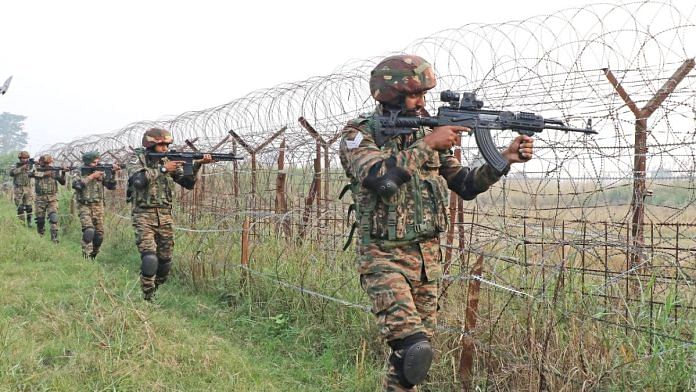However, deterrence pertains to dissuading an adversary from taking a particular action, “if you do X, then we will do Y and Z”. For Pakistan, terror-use is not a singular act but an established policy with varying volume levels that are adjusted based on immediate needs. This logic nudges India towards compellence instead of deterrence. Compellence, put simply, entails the application of force on another power with the intent to make it alter an already chosen path, “if you do not abandon X, then we will do Y and Z”. The main import of this distinction is that whereas deterrence is achievable even for a power that is far weaker, given the advantage of a defender’s resolve, compellence requires significant power gaps in your favour in order to yield results.
Seen from this perspective, Operation Sindoor was a grand operational success and marks a new chapter in the Indian way of warfare. This part is not ambiguous. But there is still the feeling that Pakistan has not learnt the right lessons (and sufficiently so). A much weaker Pakistan—on the brink of bankruptcy and severe civil strife—needed to only stay in the fight and achieve a semblance of retaliatory parity in order to ‘win’. This, the Pakistan army and strategic community, believe, has been achieved. Both compellence as well as deterrence, after all, lie in the minds of the adversary and not the deterring/compelling state.
There has been a strong expectation amongst Indian citizens that in any military contest, India is likely to easily triumph over Pakistan. After all, India has overwhelming size advantages in terms of population, territory, economy, as well as annual defence budget. However, Indian punitive actions in response to Pakistan are a different kettle of fish compared to conventional attrition-based warfare. Bound by the fact of nuclear weapons in the sub-continent as well as India’s need to avoid a long-drawn, wasteful war, such actions have been domain-specific, brief and swift, and yet extricable in theory. Macro-advantages in terms of overall national power do not significantly impact this operational environment, and their influence is somewhat limited.
In 2019, post the Pulwama attacks, India carried out deterrence-restoring punitive military strikes predominantly in the air domain. Post Op Sindoor, this choice of domain is likely to continue—perhaps with a greater role for precision and mass artillery strikes.
Air options, such as drones and missiles, are cleaner, politically impactful, and extricable by nature. Hence, air-based operations are fit for purpose as a punitive option that a civilian administration would like to have during a crisis with Pakistan. Rather than overall military strengths, it is niche capabilities that matter more and immediately in this operational environment.
India’s strategy of emphasising air operations makes perfect sense given these realities. However, this creates a challenge: Pakistan, with significant Chinese assistance, has been in capabilities designed to counter India’s air advantage and reduce the operational power gap between the two nations—to serve deterrence. The air domain remains key, and by the same token, it is losing the element of surprise—leading to both focused investment by Pakistan and higher forms of escalatory exchanges.
While the 2019 Balakot strike was a great success in heralding a fresh strategic doctrine for a new India, it also the distance the Pakistan Air Force (PAF) has covered since the early 2000s in terms of both platforms and modernisation, particularly .
India had learnt operational lessons from Balakot, and hence, there has been a focus on filling niche tech-based gaps. This has entailed a focus on procuring or inducting Airborne Warning and Control System (AWACS) jets, data link systems, and the procurement of Software Defined Radios (SDR) to protect against jamming, as well as the successful induction of 36 4.5-generation Rafael jets and the formidable S-400 Air Defense (AD) system. However, this has been an ongoing, albeit incomplete, process. It’s no secret that the Indian Air Force (IAF) has faced challenges, particularly in procurement, upgradation, and maintenance, due to erratic supplies from a war-engaged Russia. This has been widely discussed and written about, and even by former Air Chief Marshal BS Dhanoa, the present Air Chief, AP Singh.
However, it is worth noting that post-Balakot, Pakistan did not remain idle and sought to enhance its deterrence in response to India. This occurred in the form of China’s J-10 and JF-17, intense tech-heavy training, along with a focus on newer AD systems. Through exercises with China’s People’s Liberation Army Air Force (PLAAF), the PAF has sought to itself with Su-series Indian platforms, as well as refine electronic counter-countermeasures (ECCM). The cost-efficiency of Chinese jets and missiles also works to Pakistan’s relative advantage, as it can acquire advanced jets and missiles in much greater numbers, partially offsetting lower defence spending compared to India.
In terms of , drones, and AWACS, Pakistan is close to equalling India operationally, and especially in the context of a short and swift military contest where attrition does not come into play. India has been particularly concerned about the with Pakistan since 2019 and has made strong efforts to offset the same. However, the gap has , allowing Pakistan to achieve greater situational awareness and sensor-radar separation, thereby increasing the stealth and lethality for a first strike. In this context, Pakistan has also benefited greatly from China’s strategic and collusive assistance. As military analyst and China-watcher Craig Singleton during Op Sindoor, “Beijing’s long-standing support for Islamabad – through hardware, training, and now increasingly AI-enabled targeting – has quietly shifted the tactical balance.” Delhi needs to pay greater attention to such subtle but important shifts for the future.
Op Sindoor can be viewed as Balakot air strikes magnified exponentially. The next military conflict is likely to start with deeper and harder strikes (a higher threshold) and with both military targets seen as fair game sooner than has been the norm. India’s decision to prioritise de-escalation by not targeting AD units during the airstrikes may have resulted in the loss of valuable military assets. This will influence politico-military choices during the next crisis. The latest crisis saw limited engagement in the naval and land domains. In the next confrontation, this could change, and it is more likely to occur in the ground domain (greater artillery strikes and troop movements for risk manipulation). Finally, war stamina is likely to play a greater role in the next confrontation—requiring each side to stack up stockpiles, create redundancies, and secure emergency supply arrangements from ‘allies’ in the interim.
Therefore, developing decisive conventional and operational superiority over Pakistan represents the most elegant solution to break these dangerous cycles of retaliation. Without operational domination, India’s future military options will remain high-risk, constrained, and unable to deter Pakistan’s ‘misadventures’ in response to India’s punitive strike. With operational domination, India will have greater coercive leverage during peacetime as well as more flexible and lower-risk military options during a near-war crisis.
Given that Pakistan’s procurement plans, as well as its modernisation efforts, are and , India will have to offset these developments on its way toward striving for a clearer imbalance of power. Instead of denigrating and pooh-poohing the Pakistan armed forces, India’s military revival would actually hinge on overestimating them, regardless of the emotional dissatisfaction involved in the thought.
Op Sindoor has demonstrated what India is capable of when pushed to the brink, and its restraint is taken for granted. But it has also demonstrated how much more is achievable in the coming years, especially in the area of increasing jointness as well as indigenisation. This, along with a higher defence budget of 2.5 per cent of GDP constitutes the pathway that converts Comprehensive National Power to overall military asymmetry, a favourable operational environment (mainly air) for power projection, and the material architecture for supporting strategic and political objectives pertaining to compellence (rather than tit for tat deterrence). In fact, this same road is certain to bolster deterrence vis-à-vis China (by reducing operational asymmetries) over the long term as well. Even as the last crisis was a close shave in terms of loss of escalation control, the future holds great promise and potential if the right lessons are learnt.
(Edited by Theres Sudeep)








